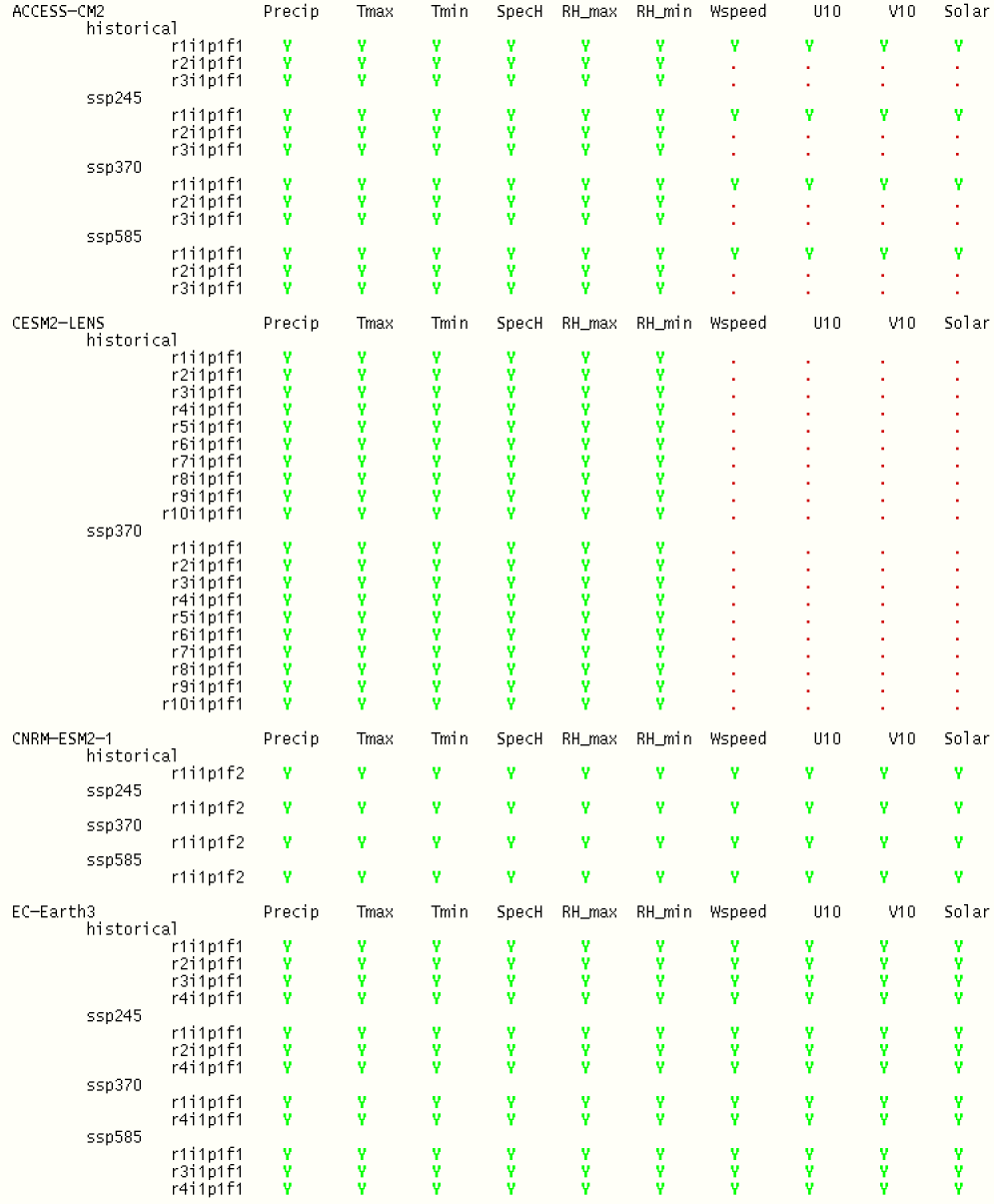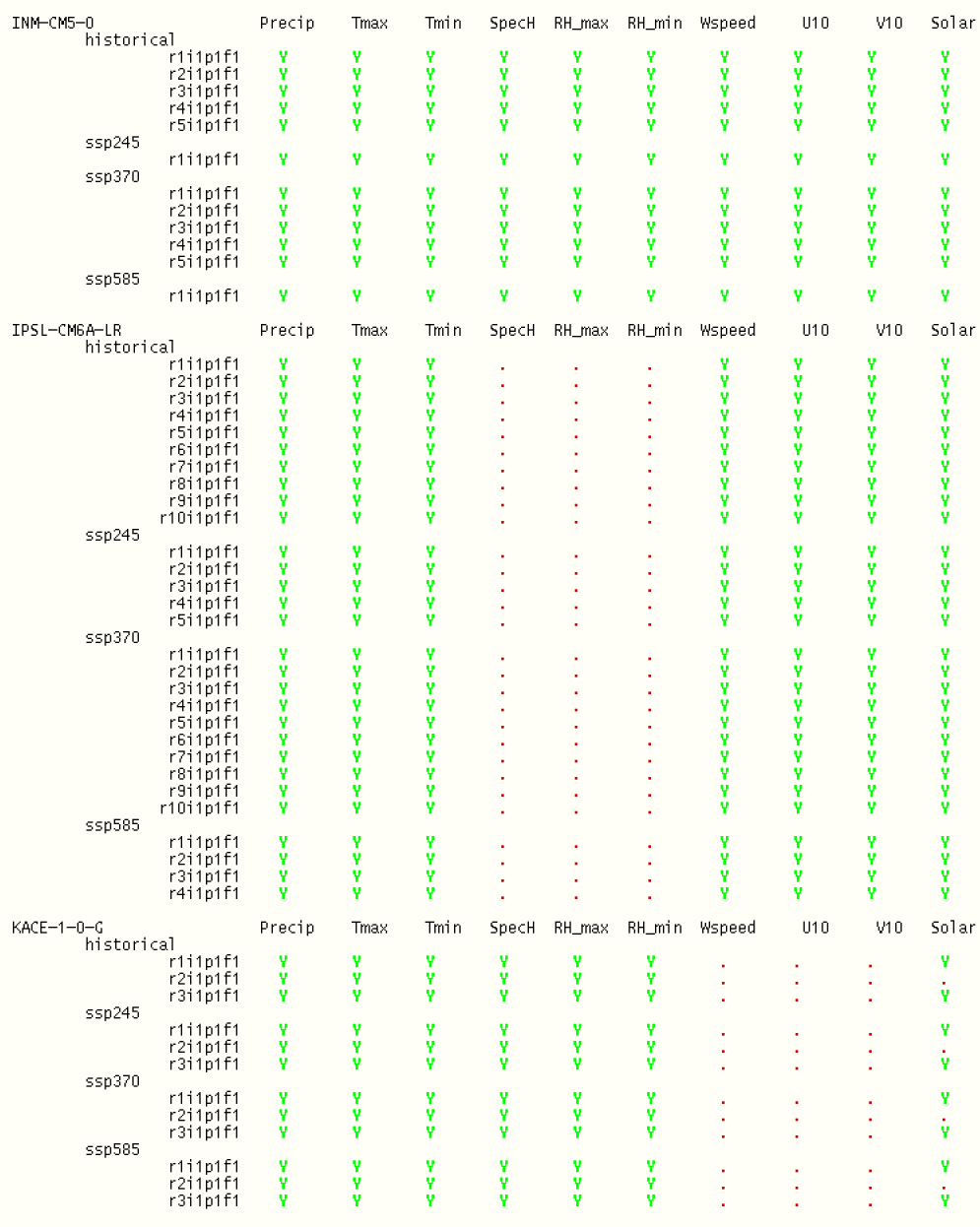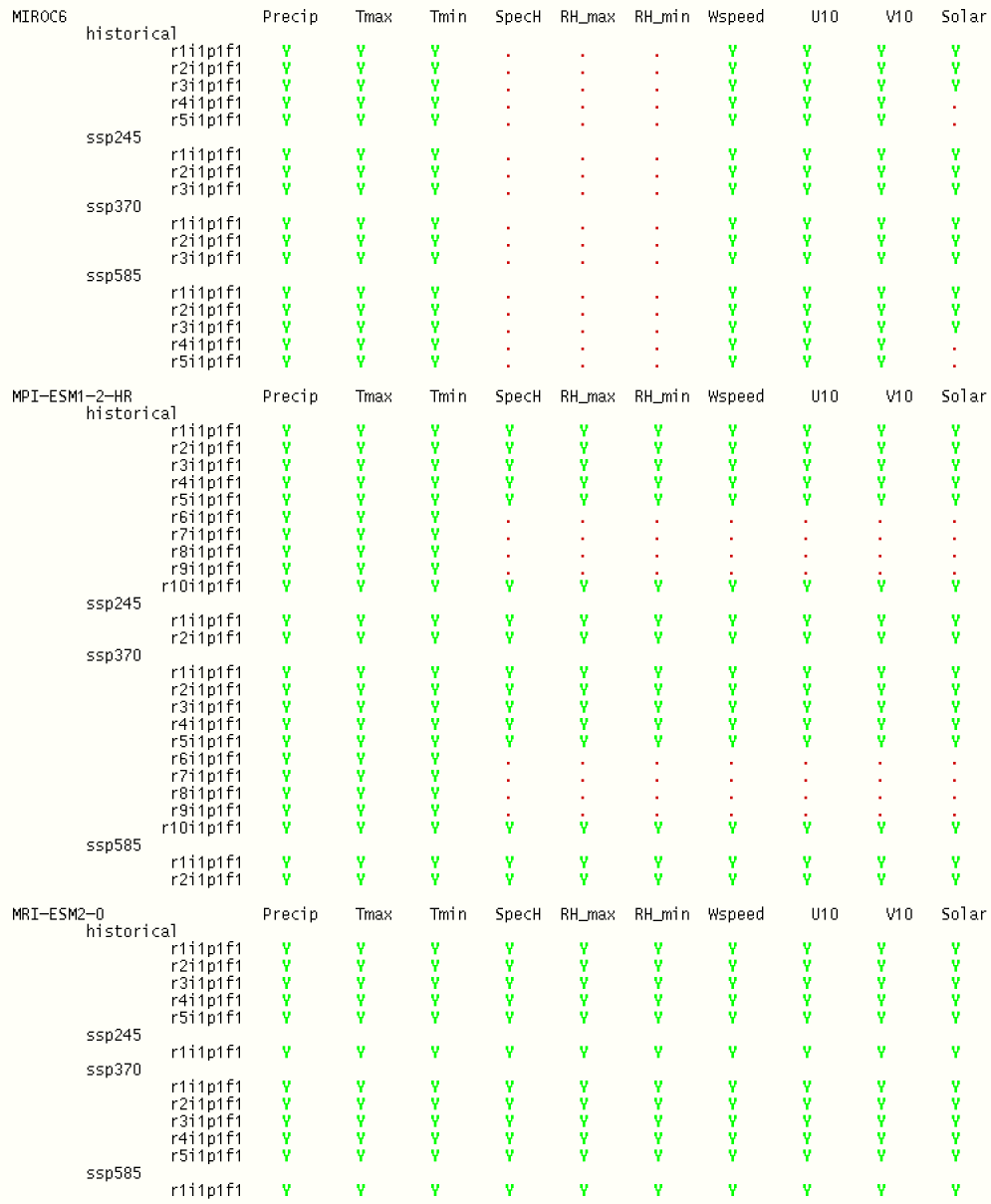The LOCA2-Hybrid dataset at 3 km for the California domain using CMIP6 was completed in mid 2023. This is one of the downscaled data sets that is being used to inform the Fifth California Climate Assessment.
(You can also read how the LOCA2-Hybrid (California) downscaling differs from the North American downscaling or how LOCA version 1 differs from LOCA version 2).
Downloading
The LOCA2-Hybrid data will be available via the Analytics Engine, a project funded by the California Energy Commission. For more information about how to access the data, please contact the Cal-Adapt Analytics Engine team at analytics@cal-adapt.org.
Data description
* 3 km spatial resolution
* Daily Tmin, Tmax, Precipitation, Specific humidity, Relative humidity max, Relative humidity min, windspeed at 10 m, U and V wind components at 10 m, and surface downward solar radiation (for those models that saved the requisite data)
* Hourly temperature at selected meteorological station locations
* 1950-2100
* SSP 245, SSP 370, and SSP 585 are included, but only if the original GCM ran those scenarios
* 15 models included, chosen based on good performance over California as evaluated in Krantz et al. (2022):
ACCESS-CM2
CESM2-LENS
CNRM-ESM2-1
EC-Earth3
EC-Earth3-Veg
FGOALS-g3
GFDL-ESM4
HadGEM3-GC31-LL
INM-CM5-0
IPSL-CM6A-LR
KACE-1-0-G
MIROC6
MPI-ESM1-2-HR
MRI-ESM2-0
TaiESM1
* Up to 10 ensemble members (for models that saved data from multiple ensemble members)
Methodology and references to cite
* Found in the bibliography. Additionally, the LOCA2-Hybrid California domain data were downscaled using a hybrid statistical-dynamical downscaling approach using dynamically downscaled WRF data as the training data set. The details of this methodology are currently being written up.
Details
Here is the detailed list of models, ensemble members, SSPs, and variables that were downscaled. The models to downscale were based on an analysis by Will Krantz of UCLA of the best performing models over the region of interest.




